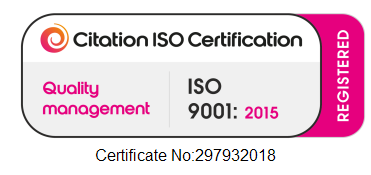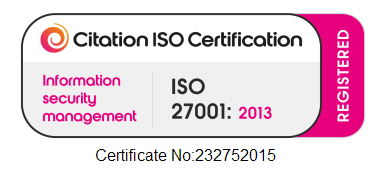

8 Nov 2019
What is this EMDR that everyone talks about?
Qualifying in 1990, Dr. Alison Hoskins is a Consultant Clinical Psychologist who has worked within the NHS and the private sector, opening her own practice in 1992 followed by a Psychology Consultancy in 2000. Forming part of our Clinical Advisory Board, Dr. Alison Hoskins is the Clinical Lead for our nationwide network of Clinical Psychologists and CBT therapists who carry out medico-legal assessments and psychological treatment to our vast customer base.
As an eminent expert in this field, Dr Hoskins has written an informative piece exploring EMDR, delving deeper into how the treatment is performed as well as the client experience.
When first encountered, the concept of EMDR (Eye Movement Desensitisation and Reprocessing therapy) can be perceived as unconventional and perhaps experimental, but in actual fact it’s well founded in its methodology and research. EMDR is now evidenced to be a highly effective treatment method with many clients reporting significant improvements in just a small number of sessions.
EMDR in a nutshell
EMDR is considered a short-term therapy and a typical course of treatment would span 6-12 sessions. It is a relatively new Psychotherapy developed by Francine Shapiro in 1989 as a treatment for traumatic memories and particularly PTSD (Post-Traumatic Stress Disorder), which is now recommended in NICE guidelines as an alternative to CBT (Cognitive Behavioural Therapy). More recently, it has gained popularity for treating a wider variety of conditions including anxiety, phobias and pain.
According to Shapiro, when a traumatic or distressing experience occurs, it may overwhelm normal cognitive and neurological coping mechanisms, meaning images, thoughts and feelings do not get stored appropriately in memory. If not adequately processed by the brain, traumatic memories stay unattached to the correct memory store and remain free-floating, popping up any time there is a reminder of the traumatic event. Sometimes they can be triggered out of the blue causing flashbacks, nightmares and outbursts; this makes it difficult to deal with ordinary stressful situations in the calm and reasonable way we normally would.
Objective of EMDR
The ultimate goal of EMDR therapy is to process distressing memories, reducing their lingering effects and allowing clients to develop more adaptive coping mechanisms. Normal processing is thought to happen during the Rapid Eye Movement (REM) phase of sleep and EMDR attempts to kickstart this process for clients where this has not happened naturally. EMDR therapy helps to discard inappropriate emotions, beliefs and body sensations, leaving clients with the emotions, understanding and perspectives that will lead to healthy, useful behaviours and interactions.
Techniques of EMDR
The following are some of the primary techniques used in EMDR.
Once the client has a good understanding of what the approach will entail, eye movement is encouraged by following the therapist’s finger from side to side or using other EMDR tools that have the same effect, such as tapping on the back of the hand, lights flashing or tones heard in the ears. The client learns to install a ‘safe place’, which is unique to the individual and can be a memory or a calming image that provides an emotional sanctuary. When managing difficult thoughts, images and emotions, the client can retreat to this place in their mind. The safe place is then installed using the eye movement technique.
Following this, a target trauma is identified (often a specific scene from the earliest trauma remembered) and this is then reprocessed with the eye movement technique. The metaphor of a train is often used, with the client instructed to notice the scenery passing by. The client’s ongoing observations become the content for further reprocessing cycles and the procedure continues until the client reports low levels of distress. Rating scales are used to identify subjective distress (SUDs) and beliefs (VoC), indicating that successful processing has occurred. The next target is selected for reprocessing in the same way.
The same eye movement technique is used to concentrate on and increase the strength of the positive belief that the person has identified to replace his or her original negative belief. A range of self-calming techniques are taught and imparted upon the client for them to use in sessions and in their life outside of treatment - and the processing that has been prompted in sessions often continues in between appointments. Despite the fact that this is a positive sign that treatment is progressing, a client will need to have ways to balance their equilibrium when this occurs.
EMDR sessions are not considered successful until the client can bring up the original target without feeling any body tension. To measure success, ratings are taken of subjective distress and beliefs at every session.
Client experience of EMDR
The way in which a client responds to EMDR varies and depends very much on the individual concerned. For example, clients who trust their therapist and are able to master the safe place and self-calming techniques regularly report an improvement in just a few sessions. Although in general clients aren’t sent away with “homework” per se after each appointment, some report a heightened awareness of thinking outside of treatment sessions. Feeling light-headed for a while during treatment and a temporary increase in nightmares and flashbacks while trauma memories are processing is also commonly reported by clients.
Responses also vary according to the number of traumas an individual has suffered. In cases where an individual has had one single event of trauma, the treatment is relatively quick and straightforward. However, someone with multiple and long-standing traumas can find the treatment challenging, as they will need to work through earlier traumas first, increasing the number of sessions required.
If you’d like to read more articles written by our experts, head over to our Speed Expert social channel on Twitter - @experts_speed. Or, if you’re interested in joining our Expert Panel, please apply today.






